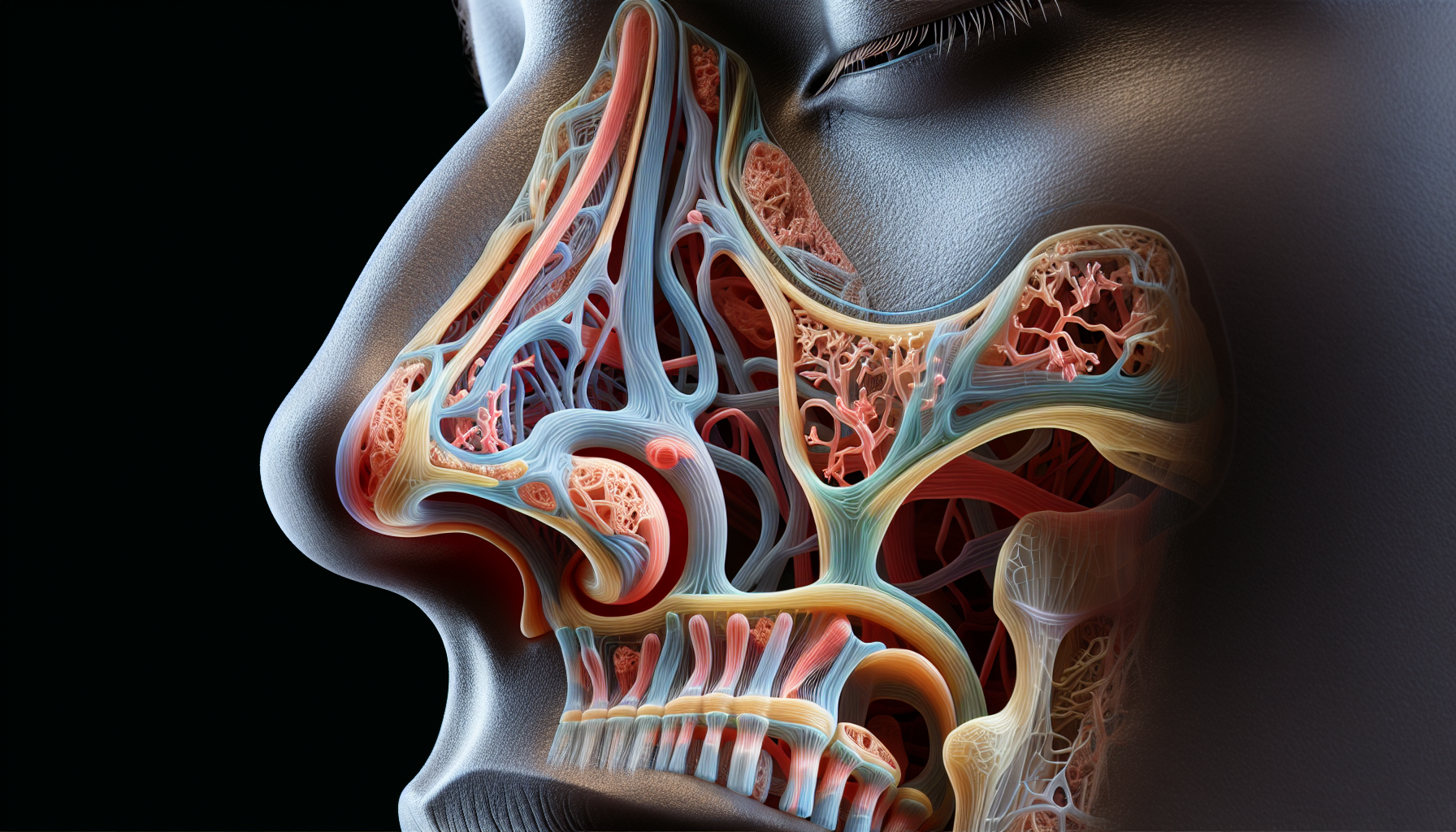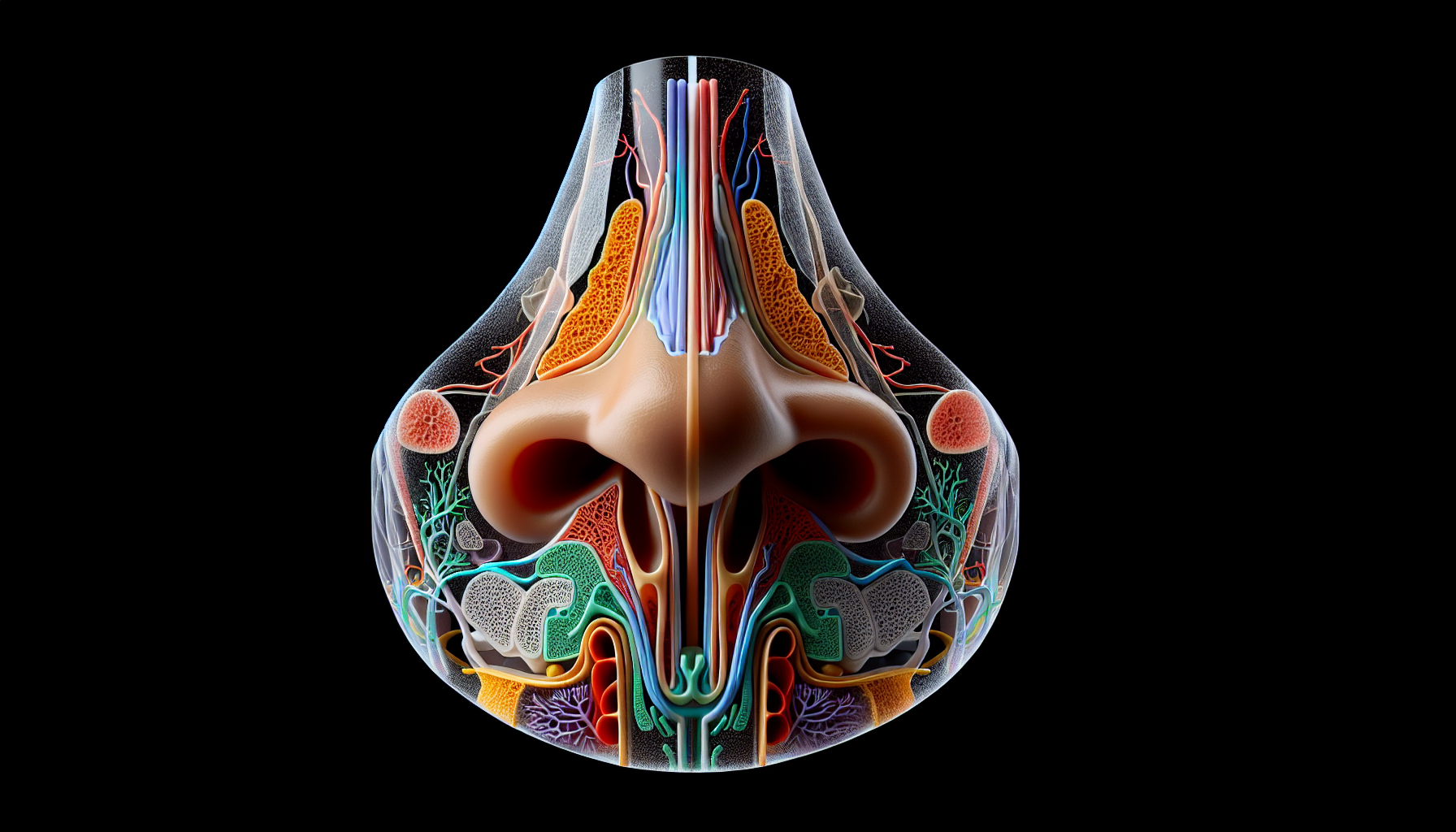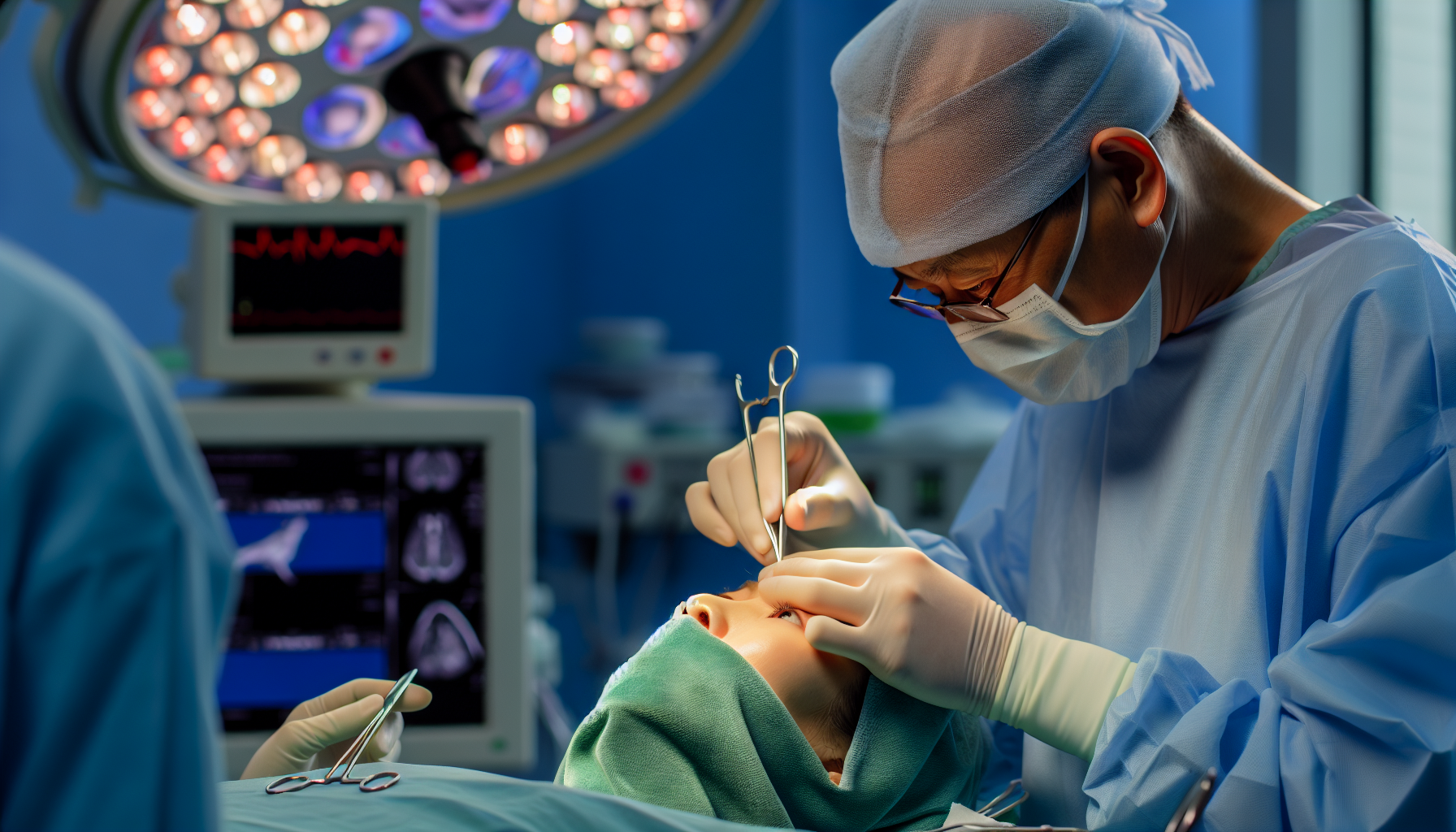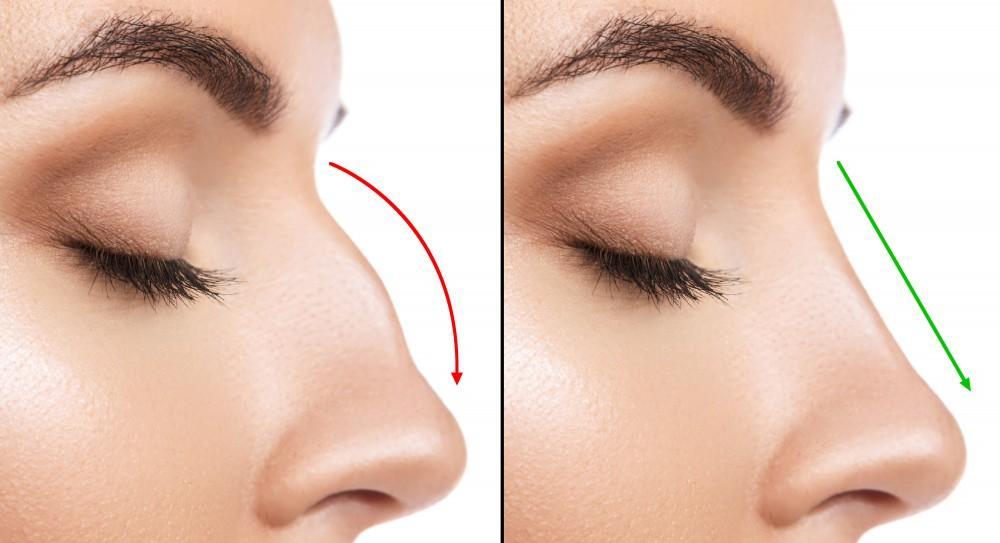What is rhinoplasty? Simply put, it’s a surgical practice to reshape your nose, serving both cosmetic desires and medical needs. This procedure, whether to enhance facial harmony or improve breathing, is personalized to each individual’s anatomy. Our article delves into the procedure’s details, from initial consideration to the final recovery, equipping you with the knowledge to understand what rhinoplasty entails without overwhelming you with medical jargon.
TL:DR
- Rhinoplasty is a customized cosmetic or functional surgery involving complex changes to the nasal bone, cartilage, and skin, requiring shared understanding and communication between the patient and surgeon to ensure desired outcomes align with overall facial harmony.
- Different types of rhinoplasty procedures include open and closed techniques, which are chosen based on complexity and required changes, while revision rhinoplasty serves as a corrective measure for previous surgery outcomes affected by scar tissue challenges.
- Postoperative care is crucial for recovery and final results post-rhinoplasty, with swelling and healing timelines varying among individuals, and careful monitoring through follow-up visits essential to manage healing and spot potential complications.
Defining Rhinoplasty: The Art and Science of Nose Reshaping

Within cosmetic surgery, rhinoplasty emerges as a treatment tailored to modify the nose’s shape, whether for aesthetic enhancement or functional betterment. It’s more than a simple procedure; rhinoplasty is a journey, a transformation that begins long before the surgery and continues well after the final stitch.
The allure of rhinoplasty stems from its transformative potential in reshaping and redefining. The surgery involves adjustments to:
- the nasal bone
- cartilage
- skin
- or a combination of these elements
Each brings its own set of complexities and nuances to the operation. This procedure is not a one-size-fits-all; rather, it’s a unique journey tailored to match each patient’s specific facial anatomy and personal objectives, taking into consideration their facial features.
The accomplishment of this transformative journey is a shared responsibility between the surgeon and the patient. Clear, open communication about the desired outcomes is paramount to ensure the changes align harmoniously with the overall facial balance and, if needed, improve nasal function.
The Anatomy Involved in Rhinoplasty

The nose, a distinct element of the face and one of the other facial features, is an intricate formation made of bone and cartilage, as well as soft tissue, with each component playing a vital role in the artistry of rhinoplasty. The upper third of the nose, known as the bony pyramid, is formed by the nasal bones and the frontal process of the maxilla. The remaining structure is shaped by the upper and lower lateral cartilages attached to the nasal bones.
The nasal septum, a blend of cartilage and bone, is the unsung hero of the nose. It provides critical support and significantly impacts the aesthetic outcome of the nose. Septal surgery is often needed to correct external nasal deviation. Rhinoplasty is a delicate dance where the surgeon exposes nasal cartilage and bones through precise incisions, using grafts when necessary to enhance the nasal structure.
The skin and soft tissue envelope (SSTE) covering the nose is another key player in the rhinoplasty story. Its thickness varies along different parts of the nose, influencing both the surgical approach and the visibility of the results. Understanding the complexities of nasal anatomy helps us appreciate the intricacy of the rhinoplasty procedure.
Types of Rhinoplasty: Cosmetic and Functional
Rhinoplasty is a comprehensive procedure, addressing both cosmetic and functional requirements. Cosmetic rhinoplasty focuses on enhancing the external appearance of the nose, while functional rhinoplasty addresses internal structural problems to improve breathing. The surgical approach can be either closed, with all modifications performed internally, or open, providing better visibility of the nasal structures.
However, sometimes, a revision rhinoplasty may be necessary to address dissatisfaction or complications from previous surgeries.
Closed vs. Open Rhinoplasty
The selection of closed or open rhinoplasty largely depends on the case’s complexity and the scale of the alterations required. In a closed rhinoplasty, all incisions are made inside the nostrils, keeping all modifications hidden from sight. However, open rhinoplasty takes a step further by including a trans-columellar incision across the columella, lifting the skin for better visibility of the nose’s structure.
The open approach has its distinct advantages. It allows for more precise and intricate surgical work due to direct visualization of the nasal structures. It also facilitates advanced cartilage grafting techniques due to the increased access this method provides. On the other hand, closed rhinoplasty leaves no visible external scar post-surgery and potentially results in less swelling during recovery.
The choice between open and closed rhinoplasty is not about patient preference but about the nature of the changes needed in the nose. Regardless of the approach, the recovery period often involves similar timelines and side effects, such as swelling, bruising, and discomfort within the first week.
Revision Rhinoplasty
Revision rhinoplasty represents a second chance for patients seeking improvement after previous surgeries. This procedure addresses dissatisfaction, unresolved cosmetic concerns, or complications from past procedures. The techniques used in revision rhinoplasty may involve significant alterations, including extracorporeal septoplasty, use of alar rim grafts, and osteotomies to modify the bone structure.
One of the greatest challenges in revision rhinoplasty is managing scar tissue from primary surgeries. This scar tissue can reoccur and affect the outcome of the secondary procedure. Despite the complexities, the prospect of achieving the desired nasal appearance and function often outweighs the challenges, making revision rhinoplasty a beacon of hope for many patients.
Preparing for Your Rhinoplasty Procedure
Adequate preparation is fundamental for the success of any surgical procedure, including rhinoplasty. From medication restrictions to lifestyle changes, a lot goes into preparing for this transformative journey.
Certain blood-thinning medications and supplements such as:
- Aspirin
- Celebrex
- Plavix
- Vitamin E
- Ginkgo
- Ginseng
- Fish oil
- St. John’s Wort
should be avoided a week prior to surgery. Topical skin products containing Retin-A, salicylic acid, benzoyl peroxide, and other medicated substances should also be avoided approximately four to five days before surgery.
Lifestyle changes are also part of the preparation process for surgical procedures. Here are some important steps to take:
- Abstain from smoking and alcohol consumption for specified periods before and after the surgery. These activities can impair healing and lead to complications.
- Maintain skin hygiene by washing the face with a gentle cleanser.
- Hydrate the body by increasing water intake.
Following these steps will help ensure a smoother recovery.
Planning for post-surgery care is equally important, especially after an outpatient procedure. Here are some things to consider:
- Make transportation arrangements, as driving is not recommended after the procedure.
- Have necessary medications, cold compresses, and ointments ready at home.
- Prepare meals in advance to ease the recovery process.
The Rhinoplasty Procedure: Step by Step

The rhinoplasty procedure comprises meticulous steps, each playing a significant part in the transformation journey. Tailored to the patient’s needs and the surgery’s complexity, rhinoplasty can be performed under local anesthesia with sedation or general anesthesia. The procedure begins with an incision either within the nose for a closed rhinoplasty or across the columella for an open approach.
The heart of the nasal surgery lies in reshaping the nasal structure, including the nasal tip. The surgeon may remove or add bone or cartilage, sometimes utilizing grafts from other body parts. Various techniques are applied for tip contouring and dorsum refinement, all aimed at sculpting the desired shape.
After crafting the new shape, the rhinoplasty procedure involves the following steps:
- The skin and tissue are repositioned.
- The incisions are closed using sutures.
- A splint may be placed to support the new structure and minimize swelling.
The rhinoplasty surgery generally lasts one to three hours and is conducted on an outpatient basis, emphasizing the necessity of precise planning due to the patient’s horizontal position during surgery.
Post-Operative Care and Recovery
Post-operative care constitutes a crucial segment of the rhinoplasty journey. It involves managing swelling and pain, caring for the wound, and attending regular follow-up appointments.
By following the surgeon’s instructions diligently after visiting an outpatient surgery center, patients can aid the healing process and ensure a smoother recovery.
Managing Expectations: Swelling and Healing Time
Swelling and healing time following rhinoplasty can vary greatly. Here is a general timeline:
- Swelling occurs immediately after the procedure
- Significant reduction in swelling around four to six weeks post-surgery
- 80 percent of nasal swelling resolves within two months
- Most of the swelling subsides after three months
However, it’s important to manage expectations as full resolution of swelling and complete visibility of the nose’s new shape can take up to a year. Asymmetrical healing is normal and temporary, with one side of the nose potentially swelling differently than the other. The final shape of the nose emerges within 6-12 months, especially in the first 2-3 months as the swelling decreases.
The timeline for healing can vary depending on individual factors such as:
- age
- general health
- surgical techniques used
- the specific nature of the rhinoplasty procedure including skin structure and the type and amount of grafts utilized.
Follow-Up Visits and Long-Term Results
Follow-up visits are an integral part of the post-operative journey. These regular appointments allow the surgeon to monitor the recovery process and address any concerns or complications. The first post-operative visit is typically scheduled five to seven days after the surgery to monitor healing and remove any packing materials or stitches from the nose.
Attending all post-operative appointments ensures proper monitoring for signs of swelling and confirmation of correct healing. Patients of rhinoplasty typically have two visits in the first week to monitor healing, with additional follow-ups in the first few months.
The journey doesn’t end here, though. The final results of rhinoplasty are typically seen at the one-year mark, which completes the patient’s transformation.
The Psychological Impact of Rhinoplasty
Rhinoplasty entails more than a physical transformation; it embodies a psychological journey too. Patients seek rhinoplasty for a variety of reasons, including functional improvement and aesthetic enhancement. Carefully discussing these reasons is crucial to set achievable expectations for the surgery outcome.
Achieving high patient satisfaction with rhinoplasty involves:
- Careful selection of surgical candidates
- Ensuring patient compliance with postoperative instructions
- Maintaining open communication for any concerning signs or symptoms
Delineating what specific nasal features a patient is discontent with and explaining step by step what improvements are possible can guide to determine if the patient’s expectations are realistic and achievable through rhinoplasty.
Digital imaging techniques are utilized in rhinoplasty to provide a visual representation of potential surgical outcomes, enabling both the patient and the surgeon to make informed decisions regarding desired changes.
Risks and Complications Associated with Nose Jobs
As with any surgical procedure, rhinoplasty carries its unique array of risks and complications. Common risks include bruising, bleeding, infection, nasal obstruction, or an adverse reaction to anesthesia. Following a rhinoplasty procedure, patients should monitor for unusual symptoms such as excessive bleeding, severe pain, or sudden swelling, which may indicate a complication.
While complications are rare, they can occur. One such rare complication is septal perforation, which can cause chronic nosebleeds, crusting, and difficulty breathing. Ensuring that the procedure is performed by a qualified and experienced surgeon can minimize these risks.
Choosing the Right Surgeon for Your Nose Job
Selecting a surgeon for your rhinoplasty procedure is a pivotal decision with significant implications on the outcome. When selecting a surgeon, ensure they are board-certified by recognized entities such as the American Board of Plastic Surgery (ABPS) or in Canada by the Royal College of Physicians and Surgeons of Canada.
A surgeon who is double board-certified in facial plastic and reconstructive surgery and has specific training in rhinoplasty indicates a higher level of expertise among plastic surgeons. Prospective patients should assess the surgeon’s expertise by reviewing their past work, including before-and-after images of previous patients, and discussing the surgeon’s experience with cases similar to the patient’s situation during the initial consultation.
Choosing an experienced surgeon for your rhinoplasty not only predicts their ability to handle complex cases but also their capability to achieve consistent results. Reading patient testimonials can provide insight into the surgeon’s professionalism and their ability to solve unexpected complications.
Summary
Rhinoplasty is a transformative journey that requires careful consideration and preparation. From understanding the anatomy involved in the procedure to setting realistic expectations, every step plays an integral role in the outcome. Choosing the right surgeon, preparing for the procedure, and adhering to post-operative care are all essential aspects of this journey. With the right approach, rhinoplasty can enhance your appearance, improve your nasal function, and ultimately boost your self-confidence.
Frequently Asked Questions
How does rhinoplasty work?
During a rhinoplasty, the surgeon may make incisions inside the nose or through a small external cut at the base of the nose to access the bone and cartilage. They will then reshape or remove excess cartilage and use delicate instruments to shape the bone.
How painful is rhinoplasty?
Most patients report fairly mild discomfort after rhinoplasty, rating their pain between 0 and 4 out of 10 one day after surgery.
How long does rhinoplasty last?
The results of a rhinoplasty are typically permanent, although normal aging may cause some gradual changes.
What’s the difference between a nose job and a rhinoplasty?
A nose job and a rhinoplasty are actually the same thing. Rhinoplasty, also known as a nose job, is a surgical procedure to reshape the nose for cosmetic or medical reasons. It can improve appearance or correct breathing issues such as a deviated septum or a broken nose.
What is done in rhinoplasty?
In rhinoplasty, surgical reconstruction and shaping of the bone and cartilage are done to enhance the appearance or function of the nose. This is the medical name for procedures like a “nose job” or “nasal surgery.”

